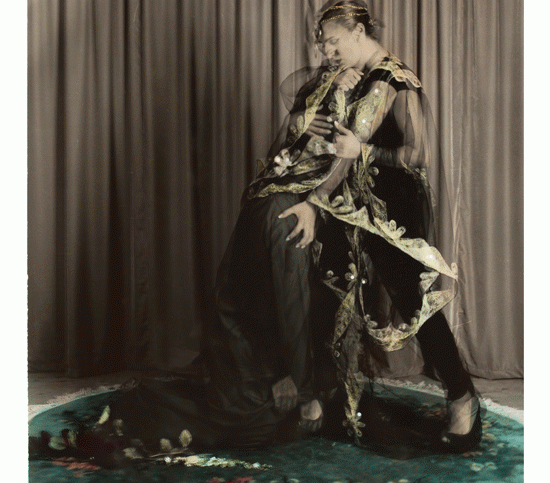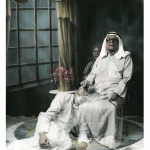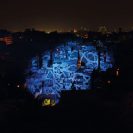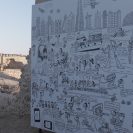By Liane Al Ghusain
Whilst Kuwait is an early adopter of social media – the country boasts high usage of Internet per capita and 48.3% of Kuwaitis use Facebook – we do not output much art photography. Whilst photography hobbyists are thickly spread throughout the small, wealthy nation – evidenced by the successful camera equipment rental business, our avid participation in Snapchat, Instagram, Facebook and Flickr when it was relevant – there aren’t many buyers of their work. If not done for leisure, photography in Kuwait often serves a commercial purpose, and secondarily a documentary one.
If you are to speak to art photographers and gallerists they will all bemoan the state of photography. “Nobody wants to pay for our work,” Djinane Al Suwayeh, a graduate of Parsons School of Art and Design, and the SPEOS International Photography School who is currently residing in Kuwait. “They all think they could pick up the camera themselves, point, shoot and make the same results.” Al Suwayeh finds that her work is much more appreciated abroad, where she has won prizes such as the PX3 Photography Award and the PDN Award, where she received further distinction for ‘Most Thought Provoking Photo.’
Artists such as Mohammad Al Kouh who use photography as their medium complain of the same hardships. Al Kouh takes an elaborate approach to his art production, making silver gelatin prints which he hand colors. He is a big proponent of studio photography, inspired by his nostalgia for Egyptian cinema and Kuwait’s oil boom ‘golden era,’ ironically times he never lived or experienced firsthand. The self-taught artist, born in 1984, often recreates the conditions of photography made before his time. “It seemed like there was true romance back then, and the future was wide open,” he says, “so my work is a form of time travel, using the same materials they used back then to try and imagine living at such a hopeful time.”
Monira Al Qadiri takes a similarly painstaking approach in her art projects – the artist who received a PhD in inter-media art from Tokyo University of The Arts is highly aware of the hyper-aesthetization present in both Japanese and Kuwaiti cultures. Her photographic artwork often involves layers of make-up, costumes and props, all in the name of gender code-switching, cultural hybridization, identity investigation and analysis. She makes the valid point that audiences in Kuwait don’t see “value in ‘print’ i.e. something that can be produced again and again. [They don’t quite accept] the concept of editions… they feel [photography] isn’t enough effort, like a painting or a sculpture.”
It’s true that with wealth comes entitlement, and in specific the insistence on being able to buy things and experiences that are ‘different’ or ‘unique.’ So it makes sense then that the elite of Kuwait who are also its handful of art patrons and collectors, don’t often take kindly to reproducible images. If we are to look at Walter Benjamin’s ideas in his essay The Work of Art in the Age of Mechanical Reproduction, then perhaps art collectors in Kuwait may deem photography works to be lacking an aura of originality. Without being “confronted with [a work’s] uniqueness,” viewers often feel disconnected from the “ritual” of its production. To further quote Walter Benjamin on the subject, he says “from a photographic negative, for example, one can make any number of prints; to ask for the ‘authentic’ print makes no sense. But the instant the criterion of authenticity ceases to be applicable to artistic production, the total function of art is reversed. Instead of being based on ritual, it begins to be based on another practice – politics.”
It is inherently political to assign value to things where there was no value before – to give ideas behind a photograph such weight that the reproducible image becomes a collectible. In Kuwait, the limited use of photography and new media for commercial and personal uses, as opposed to artistic ones, is an indication of general political malaise. Al Suwayeh notes that she has an agent in Paris who only represents Arab artists, as the agent too believes that artists and photographers from our region do not get enough encouragement and support. So why aren’t there more gallerists and artist agents in Kuwait and the Arab world supporting this artistic and political struggle?
Al Qadiri, perhaps without intending the pun says, “it takes time and exposure to get a sense of refinement for things that aren’t produced by manual labor per se.” It is this finesse for navigating the politics of new media as an art form that the art viewing public of Kuwait is currently and urgently in the need of developing. Pun intended.
And then there is the issue of privacy, which I’ll discuss in a later issue.
bazaar would like to thank Mohammed Al-Kouh for the use of his pictures. To see more of his work, visit www.mohammedalkouh.com.









